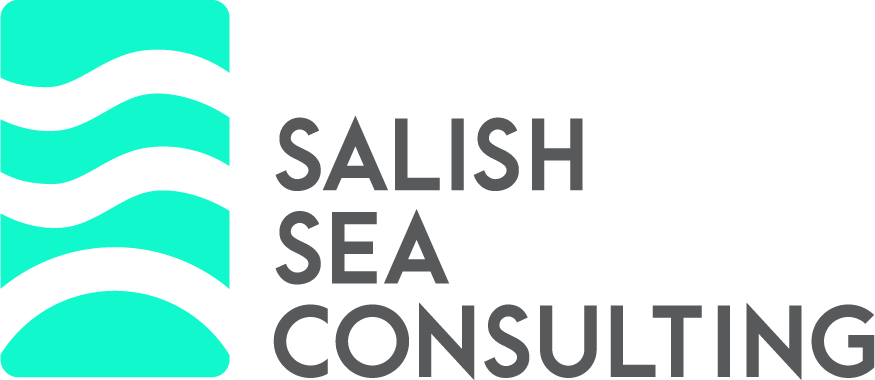Grant Writing vs Proposal Writing


The Difference Between Grants and Proposal Writing
The process of grant writing is an important part of the nonprofit fundraising process. This work helps nonprofit organizations secure funding from donors by explaining their mission, goals, and how the funds will be used. As such it is used when seeking funding from foundations or government agencies, while grant writing is used when seeking funding from private individuals or corporations.
Unlike grants, proposals are documents that are developed in response to a specific request from a donor or funding source. Proposals are typically written by individuals or organizations seeking funding for a particular project or initiative. In the case of a proposal for grant funding, the proposal itself provides a detailed overview of the project and its goals.
In addition, it's important to know where to find a grant writer - as many talented professionals are qualified to help your nonprofit. So if you're looking to improve your nonprofit fundraising efforts.
They must also be knowledgeable about budget narrative and have the ability to craft compelling stories in order to persuade grant committees and potential sponsors that their project or program is worthy of funding. With this in mind, understanding the differences between grant writing and proposal writing can help ensure that your efforts are successful in securing funding for your projects or programs.
Writing a project narrative can be hard work, but it's worth it in the end! It's like putting together a puzzle; you have to start with the line items and slowly build on them until you have a complete picture. But don't worry, with enough effort and dedication, you will start drafting your project narrative quickly!
How to Write a Great Letter of Inquiry
Both are important skills for any organization looking to acquire funding. While they have some similarities, there are also distinct differences between the two. This work involves the submission of a written request for funding from an external source, while proposal writing is the process of creating a plan or solution to a problem and presenting it to an external party for evaluation. Grant applications are typically submitted to a government agency, trust, or foundation. They are often times made out of the need for particular funding that will be used for a specific project.
Keep in mind grants are highly competitive. Carefully read the funding guidelines and make sure your main goals are in line with the organization’s proposed guidelines. Successful grant proposals keep a focus on the funder’s guidelines. your research project may not get your requested funds.
A strong proposal will always have
- supporting materials
- list anticipated outcomes
- and have an actionable plan for the funds
The grant application must describe in detail the progress of that project and why it should be funded. In order to submit a grant application, one must have all the necessary information about the project gathered by an expert who knows the field in which they are requesting support. A proposal is typically written to gain monetary or non-monetary benefits from an organization or individual who is interested in taking action on your behalf.
Authors of proposals submit them, and they are funded. Grants are given (or not given) by funding sources. Despite the widespread usage of this inaccurate language, proposal writers do not "write grants." Written proposals are made. Grants are either received or not. Awards result from proposals, which come before grants. The suggestions are decided by the applicants. A different party manages grants. Therefore, this is a proposal preparation post rather than a "grant writing" blog post.
You only get one chance to make a first impression.
Also, check out this article on Nonprofit Grant Writing
What is grant writing?
As a grant writer, you must be familiar with different types of grants and must be able to write effective proposals that meet each funder’s requirements. There are many online resources available to help you learn more about grant writing, such as grantwriting.net.
Grant writing is a strategic process that typically involves conducting research and developing a budget proposal for a prospective donor or organization to request funding for a project or initiative. The process of writing a grant proposal usually begins with developing an effective strategy for applying for funding. This may include identifying potential funding sources and submitting applications to those sources.
Once the funding application has been submitted, the grant writer spends time and resources following up with the donor until a decision has been made regarding whether or not to fund the application. This process can take several months or even years, depending on factors such as the size of the donation and the level of support provided by the donor.

What is proposal writing?
… is a strategic process that typically involves conducting research and developing an idea for a project that an organization is seeking funding for. The primary objective of a proposal is to convince the donor that the proposed project is worthwhile and should be funded. In most cases, the process of creating a proposal begins with a needs assessment that identifies the specific problems that are affecting an organization or community. This stage of the process involves gathering information from a variety of sources, including surveys and interviews with stakeholders in the community. This information is used to develop a conceptual model of the project and to assess the need for the project within the community. After completing the needs assessment, the grant writer begins the writing process by developing an outline for the paper. The outline may include an introduction, a summary of the findings from the needs assessment, a description of the project, a justification for the project, and recommendations for the project going forward.
Grant writing or proposal writing?
The two differ in a few key ways. For example, it is all about creating a document that meets the specific needs of the grantor. The goal of a grant is to fund specific projects, so it's important to submit a proposal that is relevant and convincing.
A proposal on the other hand in the context of nonprofits is written to funding agencies before the actual grant application is written and submitted. This is also called a Letter Of Introduction or Letter of Intention.
Most successful grant-seeking agencies start with an LOI. It is often in the grant guidelines too that an LOI should be written first.
A letter of inquiry is sent via email to the reviewer first along with a proposed cover letter. The letter will outline the organization’s mission and problem statement. Explain the applicant proposed project with clarity and conciseness. In general, it outlines the nonprofit's qualifications for the grant funding organization. Successful grant applications usually include a funding proposal or LOI.
Grant seeking processes include developing a research and analysis plan, conducting interviews and site visits, and creating an extensive proposal with supporting documents. Grant writing is typically tailored to that specific organization’s needs; this allows the applicant to target their audience more effectively.
Additionally, grant funding typically comes with strict guidelines as to what the funds can be used for; however, proposals do not have such limitations because they are generally less about concrete goals or expectations than grants are. Proposal writing can be broken down into four stages: planning, execution/writing, marketing/communication, and evaluation.
This is where literature review comes in - it allows them to gain a better understanding of the subject matter, allowing them to create more persuasive arguments for their projects.
The LOI must include an executive summary for a quick read-through for the grantmaker. An LOI sent in first lowers your rejection possibility. It is my number one pro tip for nonprofit grants. A winning nonprofit grant proposal uses an LOI to its advantage. It is the first step in the grant writing process usually.
Both require up-to-date knowledge of the grantor’s requirements and an ability to write persuasively. While grant writers must be able to research, analyze, and interpret data, proposal writers must be able to create compelling narratives that convince potential funders that their project is worth investing in.
Both types of writing require strong research skills, an understanding of the organization's goals and objectives, and a knack for persuasive writing. While grant writers focus on finding potential sources for a funding opportunity, proposal writers focus on crafting persuasive documents to increase their chances of success. Both activities play an important role in helping organizations secure the necessary funds they need to achieve their goals.

Some of the specific skills and competencies required for both are:
- Strong grasp of grammar, sentence structure, and punctuation
- Experience in writing proposals that succeed in attracting grants or other favorable funding opportunities.
- Ability to write persuasively using strong literary techniques such as analogy, metaphor, hyperbole, personification
- Mastering commonly used grant application formats such as program abstracts, project descriptions
- Knowledge of commonly used grant funding sources.
Further, a grant is not a blog or cover letter. It is a full application to the funder. The best way to get your grant funded is usually a writing process that includes the proposal first as a Letter of Inquiry to the grantmaker or grant funder. A grantmaker is the one who reviews your application for the foundation and then sends it to a committee usually for a full review
Where can nonprofit organizations find a good grant writer?
No nonprofit should go without a grant writer. Grant seeking is a skill that can be used to fundraise and gain support from donors. A good grant writer can help your organization develop proposals that are tailored to the donor's specific interests and needs. There are many resources available online, including manual guides and online courses. It's important to find someone who has experience writing grants for nonprofits – this will make the process smoother and more successful. So, if you're looking to sharpen your skills, start by browsing through many online options.

What Are the Parts of a Grant Proposal?
Before submitting a grant proposal, it is important to understand the basic structure and layout. A grant proposal should be well-organized, concise, and easy to read for both the reader and the funding agency. The writer must have an in-depth understanding of government funding agencies so that their proposal can be easily accepted. There are different types of grants available - philanthropic, humanitarian, research etcetera - which means that you need to know what kind of grant your nonprofit would qualify for before even starting writing! Once you have determined this information, it's time to get creative with the content of your proposal; after all, money speaks louder than words!
How Do You Write a Grant Proposal?
There are different stages involved- proposal, review, and funding- and a good grant writer will have the experience and knowledge to guide your nonprofit through each one successfully. The most important part of grant writing is always ensuring transparency; you need to keep the donor informed about your progress at all times so that they know their money is being put to good use. In addition, make sure you focus on building relationships with potential donors - this way, when the time comes for you to seek grants again in the future, they will be more likely than not open arms. Nonprofit grant writing can be a complicated task which is why I wrote an entire blog post on that work.
Tailor Your Grant Proposal
When writing a grant proposal, it is important to tailor it specifically for the organization you are submitting it to. This way, your application will be more likely to be accepted and funded. Don't be afraid to get creative with your grant proposal - there are no boundaries when it comes to grant writing include creative ideas that may not have been thought of before and see what sticks. Also, make sure you cover all bases in terms of financial data and how the money would benefit your organization in particular. Follow up after submitting your proposal - this goes a long way in showing that you appreciate the grant writing time and effort spent reviewing your application! It also establishes good relations between both parties moving forward.
Write to Persuade. Your writing should show funders how you will impact your community and neighborhood with your project.
In part, this includes understanding the logic models that the grant is based upon. A good grant writer can help your nonprofit organization reach its fundraising goals, by developing proposals that are highly tailored to meet your organization’s specific needs. Your grant writer will also work with you to ensure that your proposal is submitted in the best possible way, so as to maximize its chances of success. Fundraising through grant writing can be an essential part of any nonprofit organization's strategy - don't put off finding out about this vital process until it's too late!
You want your funding source to fully understand your need through your mission statement in the grant proposal. This is a great place to outline community needs in dollars that the grantor can understand. Most grant guidelines include some notes on setting a specific goal for the grant proposal. Nonprofit grants also include the organization’s website for reference.
Do not submit a Grant Application Cold
It’s important to work with a grant writer who is experienced in the field. By consulting with a grant writing center or agency, you can get expert help finding the right grant and submitting an appropriate proposal. Send a letter of inquiry before you send in a grant to the funder. It will help improve your success rate.
The granting organization has guidelines for funding requests. Successful grant writing includes going the extra step and that is what separates good grant writers from poor ones.
Remember to keep your organization's objectives in mind when preparing your proposal - make sure not to over-request for funding or submit unrealistic deadlines. Overall, taking these necessary steps will ensure that your nonprofit receives the funding it needs and deserves!
Do not Skip a Compelling Financial Narrative.
The most important thing to keep in mind here is that on outside organization will want to see that your program is sustainable. So keep in mind how you can show your sustainability plan in the financial section of the application. This is also where understanding your particular funding model comes in handy.
Grant writing can be complicated and that requires expertise in financial accounting, budgeting, and forecasting. A compelling financial narrative can make all the difference when applying for grants. Make sure to include key figures, graphs, and charts to support your argument - this will give donors confidence that your project is worth funding. Always seek advice from an experienced writer before starting the application process - they will be able to help you craft a winning proposal that meets the specific requirements of each individual grant program. The project narrative should include notes on project sustainability for stakeholders to verify. Include funding priorities for the particular grant project.
When I write a grant I spend a lot of time working with the client to make certain the messaging is what they want. I even have grant writing partners I use to proofread my work. This can help eliminate errors when writing especially federal grants.
How to Write a Business Letter
Conclusion
Grant writing is an essential part of the nonprofit funding arsenal. It enables nonprofit organizations to secure funding from external donors for various projects and initiatives. While proposal writing is closely related to grant writing, there are key differences that will help you understand and execute your grant proposal effectively. Make sure to consult with a grant writer to ensure that your proposal is well-written and meets the specific needs of your potential donor.




![Pixeltable vs Vector Databases: The Complete Comparison Guide [2025]](https://images.unsplash.com/photo-1673270408675-9dd0e3aa2199?crop=entropy&cs=tinysrgb&fit=max&fm=jpg&ixid=M3wxMTc3M3wwfDF8c2VhcmNofDZ8fGNvbXBhcmlzb258ZW58MHx8fHwxNzU4OTU3MTkxfDA&ixlib=rb-4.1.0&q=80&w=600)